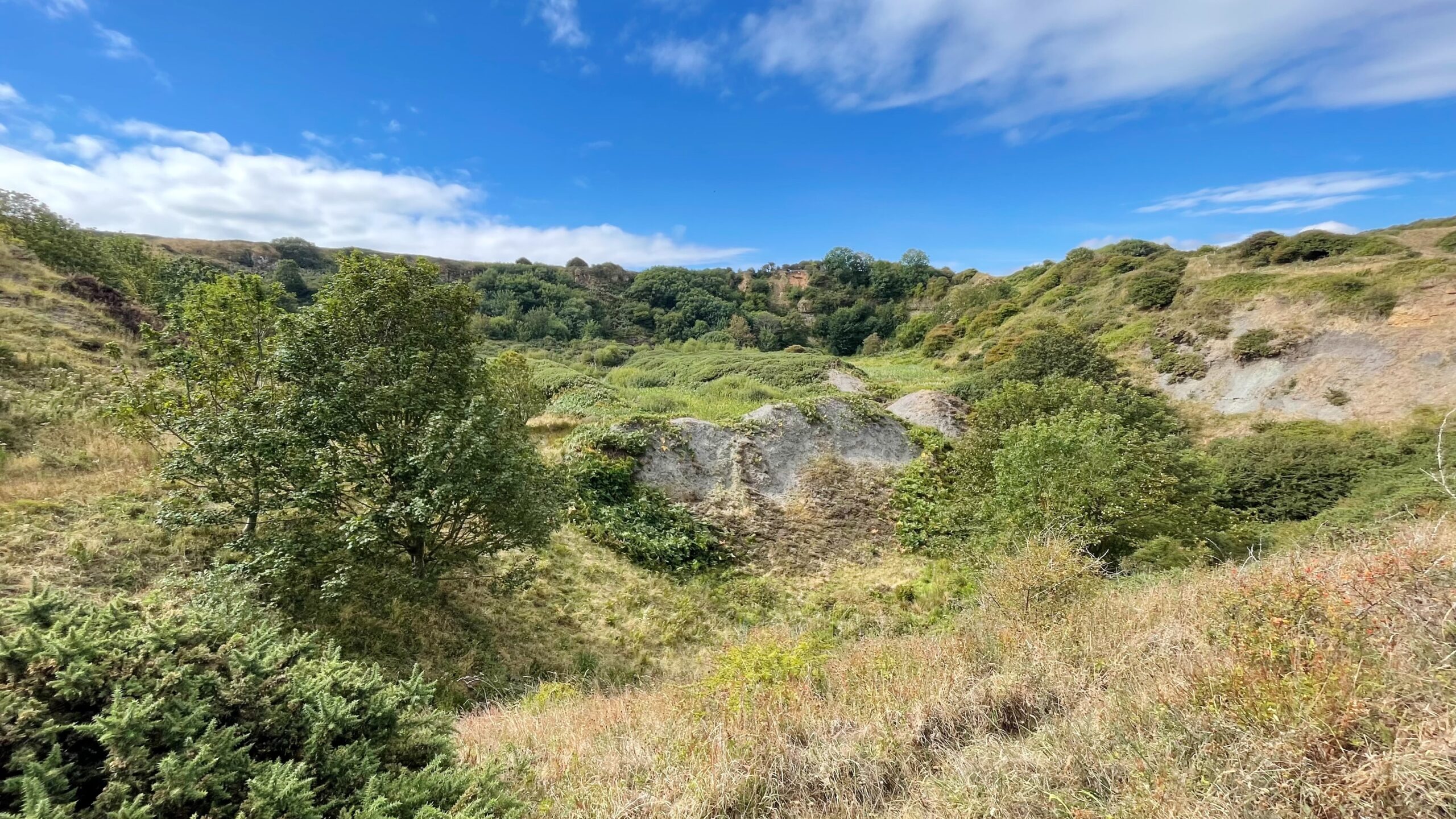High on the North Yorkshire coast, Deep Grove quarry tells the story of an industry that once transformed the landscape—and filled the air with choking fumes. Between 1720 and 1860, quarrymen here carved out the earth by hand, using nothing more than picks and shovels, to extract alum shale. From this shale, alum was produced, a chemical essential to the booming textile trade for fixing dyes1On-site information board..
Alum working in Yorkshire began much earlier, around 1610, when Edmund Lord Sheffield—later the Earl of Mulgrave—opened works inland at Sandsend and Ash Holm. By 1635, these sites were producing an impressive 1,300 tons of alum a year. Demand spread quickly, prompting other landowners along the Yorkshire coast to establish their own alum works.
The 18th century saw rapid expansion, with coastal quarries opening and new alum houses constructed, including one at Sandsend Beck (today hidden beneath the car park). From there, alum was shipped to London while coal and other supplies came in. The Mulgrave Estate reaped huge profits: shipments to London rose from £3,948 in 1749 to £6,391 by the 1770s—worth about £1 million in modern terms.
Deep Grove quarry, along with the nearby Gaytress and Ness End sites, fed the Sandsend Alum Works. To reach the shale, workers had to strip away vast layers of clay and sandstone, leaving spoil heaps that often tumbled into the sea. Shale was cut into terraces, loaded into heavy barrows, and hauled across the site—wages tied to how many loads a man could shift. Water was carefully channelled into settling ponds and steeping pits, while the concentrated ‘strong liquor’ was carried along a wooden trough clinging to the cliffs.
At its height, 150 people toiled here. But alum production was a dirty, polluting business. Visitors spoke of acrid smoke, sulphurous stench, and fumes that clung to the coast—ghostly reminders of Yorkshire’s once-thriving alum empire.
- 1On-site information board.

Leave a Reply